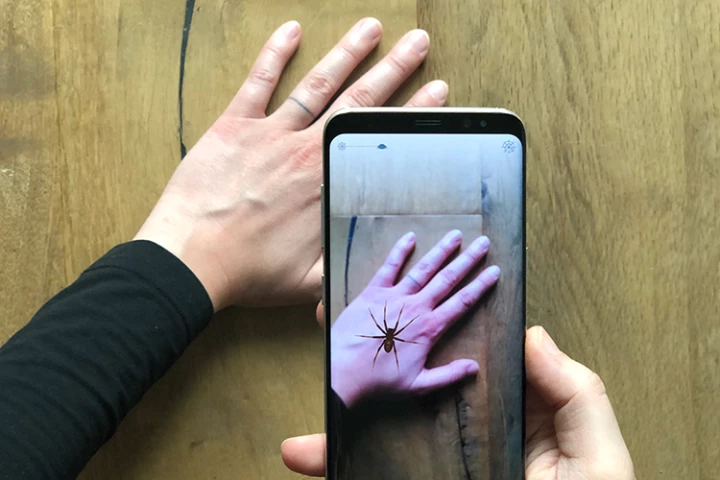Phobia
-
Pennywise, Twisty, Wrinkles, Bozo, Krusty and Ronald McDonald. What do these names have in common? They're all clowns, and, to some people, they're terrifying. A new study has examined the widespread phenomenon of clown phobia to determine how it begins.
-
A new smartphone app is using augmented reality to help reduce a person’s fear of spiders. In a study published in the Journal of Anxiety Disorders the app was found to significantly reduce feelings of fear and disgust after a two-week program.
-
New research from the University of Queensland (UQ) has now found a chemical pathway that helps the brain wipe fear memories, which could lead to new potential treatments for phobias and other fear-related anxiety disorders.
-
A new study has used a VR-based treatment to help people overcome a fear of heights. The treatment is the first to demonstrate the effectiveness of a completely automated therapy guided by a computer-generated virtual therapist that responds to the patient's voice.
-
There may be new hope for people with severe phobias, thanks to a system devised by scientists in Japan and the US. It's based around using fMRI (functional magnetic resonance imaging) to actually see when a patient is envisioning the thing that they fear.
-
An MRI physicist at King's College Hospital in London has spearheaded a virtual reality app to help soothe children's fears about receiving an MRI. The "My MRI at King's" app is specially designed to walk children through the MRI process, which can be off-putting for first-timers of all ages.
-
A team of researchers from MIT has discovered a circuit in the brains of mice that, when stimulated, can prolong the effects of therapy designed to suppress fear-related phobias.
-
Therapy is a field that could eventually have a fruitful marriage with VR. One developer recently launched an educational/simulation experience for the Oculus Rift that's basically therapy for arachnophobes. We took the forward-thinking Fearless for a spin.
-
A new study by Uppsala University in Sweden suggests that phobias and other anxiety disorders can be stopped before they fully form.








